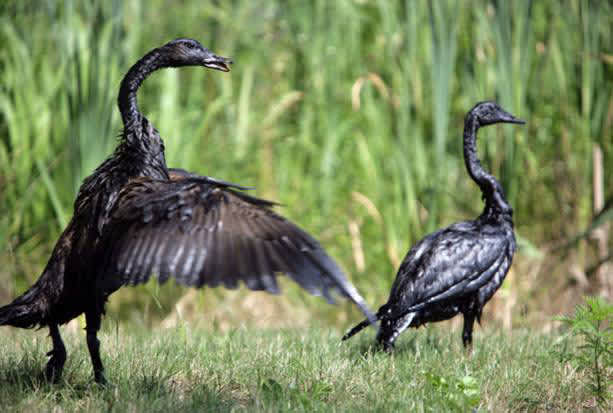Trustees to Begin Restoration Planning for 2010 Oil Spill Near Marshall, Michigan
OutdoorHub 03.07.12

The U.S. Fish and Wildlife Service, on behalf of the U.S. Department of the Interior, along with its federal, state and tribal co-trustees, today announced its intent to conduct restoration planning to restore natural resources that were lost or injured by the discharge of crude oil from a pipeline in Calhoun County, Michigan, near the town of Marshall.
The spill occurred in July 2010, when Enbridge Energy Partners LLP reported a rupture in a 30-inch pipeline near Marshall, Michigan, which released over 840,000 gallons of crude oil into Talmadge Creek, which flows into the Kalamazoo River. Heavy rains caused the river to overtop its banks and carried oil approximately 38 miles downstream on the Kalamazoo River and into adjacent floodplains. This discharge, along with associated response activities, is adversely affecting and/or threatening natural resources within the jurisdictions of the United States, the State of Michigan, the Nottawaseppi Huron Band of the Potawatomi Tribe, and the Match-E-Be-Nash-She-Wish Band of the Pottawatomi Tribe. In response, the designated state, federal and tribal trustees for these affected and potentially affected resources are undertaking a natural resource damage assessment.
The trustees for natural resources include the U.S. Department of Interior (represented by the U.S. Fish and Wildlife Service and U.S. Bureau of Indian Affairs), National Oceanic and Atmospheric Administration, Michigan Department of Natural Resources, Michigan Department of Environmental Quality, Michigan Attorney General, Nottawaseppi Huron Band of the Potawatomi, and the Match-E-Be-Nash-She-Wish Band of Pottawatomi.
Natural resources damage assessment, known as NRDA, is the process used by federal, state and tribal governments to jointly seek compensation on behalf of the public for natural resources injured or destroyed when areas become contaminated with oil or other hazardous substances. The trustees work to restore habitats and resources to pre-spill conditions, and to compensate the public for the lost use and enjoyment of the resources. Compensation is sought from the party responsible for the damage, in this case, Enbridge Energy.
Within days of the spill, trustees began collecting data to understand the spill’s impact on natural resources and recreational use in and near the creek and river. Since the spill, the trustees have gathered information on water, fish, mussels, other invertebrates such as insects and crustaceans, vegetation, recovery and rehabilitation of oiled wildlife, recreational closures, as well as data collected by response agencies. Based on information collected and reviewed by trustees during these efforts, and in accordance with state regulations and the Oil Pollution Act, the trustees have decided to conduct restoration planning to assess damages and restore those resources.
Collection and review of data will continue as trustees work to identify and quantify the spill’s impacts. The trustees will also begin restoration planning, identifying projects that benefit the same or similar resources injured by the spill. The public will have an opportunity for review and comment upon the draft assessment and restoration plan.

